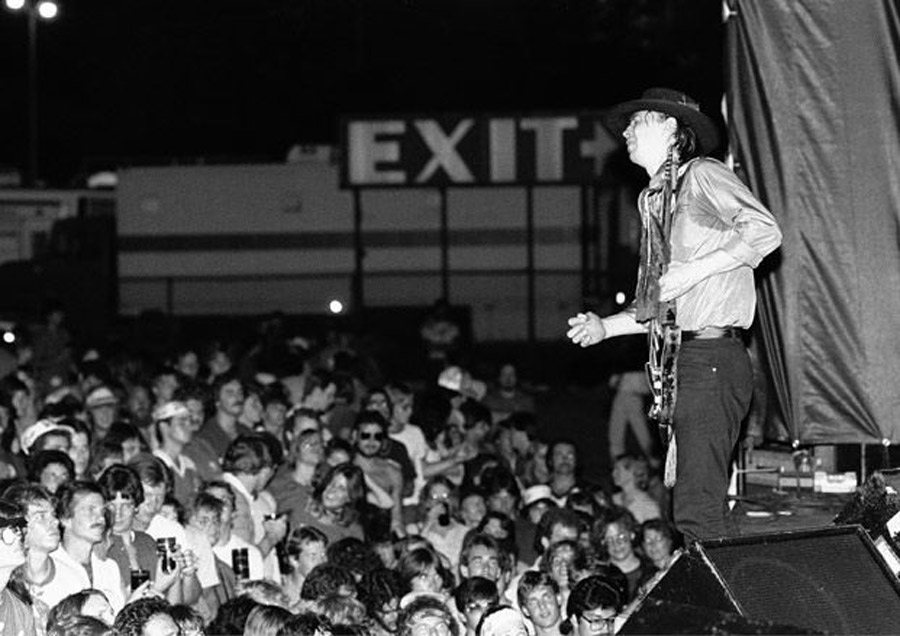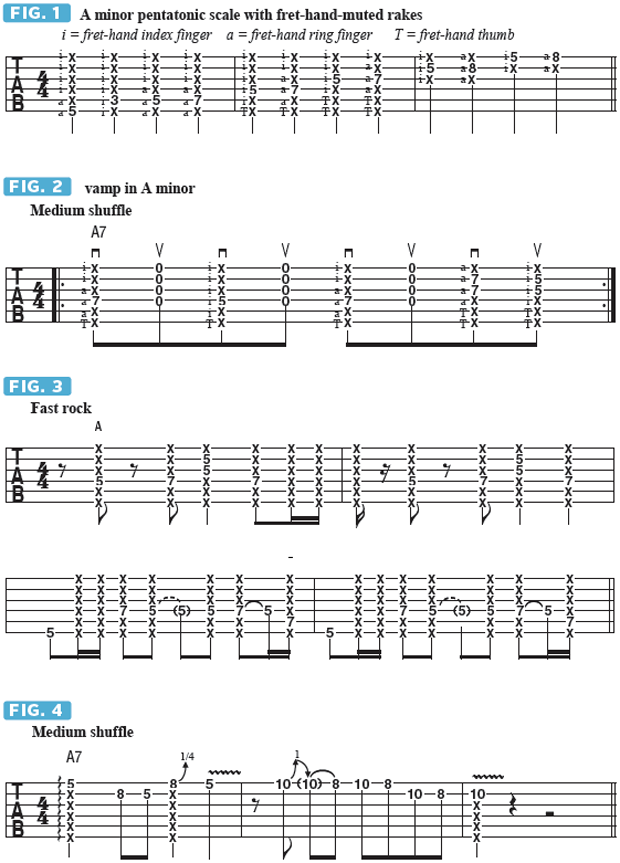How to Use Slapping and Raking in Blues Guitar

For guitarists accustomed to channel switching and distortion pedals, the thought of being forced to plug straight into a clean amp can be a nightmare. But the big, bad guitar sounds of classic blues are all “straight in,” so how do players turn this apparent handicap to an advantage? The secret is to attack.
Your sound begins at the point of impact between the pick and the string. Modern rock technique, particularly shred, minimizes the range of pick motion to maximize speed. The initial sound is small, but electronic effects, such as distortion and compression, magnify the result after the fact. In blues, the idea is to shape your tone before it leaves the guitar.
A big sound requires a big attack, so you don’t pick the strings—you slap them. Since this means hitting several strings at once, you must also train your fretting hand to mute the strings on either side of the desired note.
FIGURE 1 illustrates fret-hand muting applied to an A minor pentatonic scale (Xs indicate muted notes). Fret each note just behind the tip of your first or third finger. From the A string up, let your fingertip rest against the adjacent lower string, and on all but the high E string let the fleshy underside of the finger mute the adjacent upper string. Drape your thumb over the top of the neck to mute the lowest strings while your index finger lies lightly across the highest ones.
Slap across the strings aggressively with the pick. If your muting technique is accurate, you will hear the single fretted note surrounded by the percussive thwack of the muted strings (on the B and high E strings, aim the pick more carefully to avoid hitting the unmuted middle strings).
FIGURE 2 applies slapping to a phrase similar to Stevie Ray Vaughan’s “Cold Shot.” On the upbeats, strum the open strings with upstrokes, then immediately mute them with your fret hand.
In FIGURE 3, we apply the same fretting technique to a Hendrix-style riff on the blues classic “Rock Me Baby.” A related technique is the rake, a stylistic trademark of B.B. King, which is demonstrated in FIGURE 4. Lay the heel of your pick hand lightly across the lower strings—what is known as palm muting (P.M.)—and drag the pick across them before striking the highest note loud and clear with an emphatic “pop.”
All the latest guitar news, interviews, lessons, reviews, deals and more, direct to your inbox!
When you respond to a clean tone with a dynamic attack, your sound becomes more present and the details of your touch shine through. Cleanliness is a virtue, after all.

